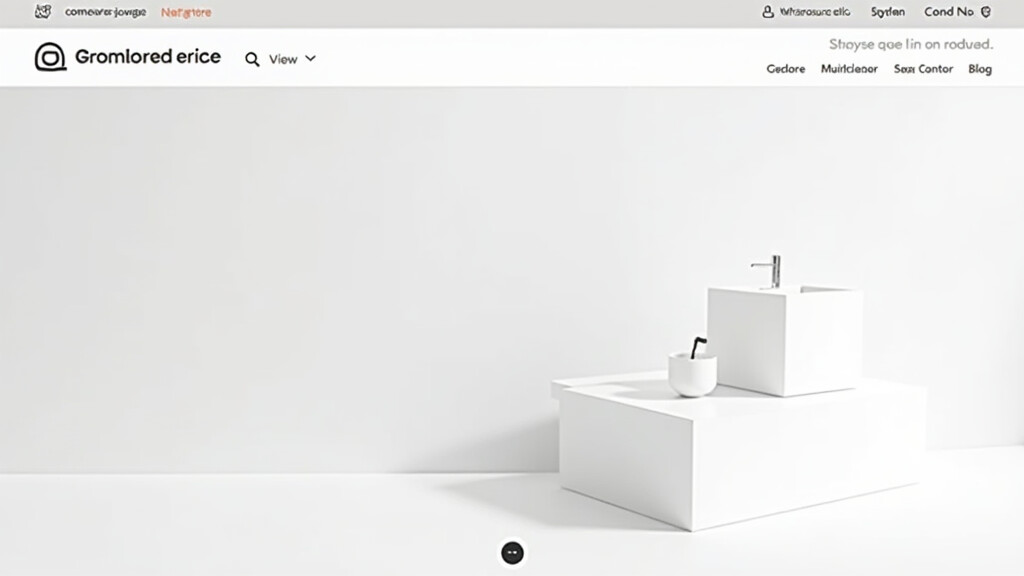
E-commerce is going through a next stage fast, and design plays a big role in shaping online shopping experiences. In this article, I explore the hottest design trends for 2024 and show you how a fresh look can engage customers and boost conversions. Modern shoppers expect a seamless experience, and updated designs can make all the difference.
The Impact of Design on E-commerce Success
A smart design not only makes a site look good but also improves user experience and ultimately sales.
Small changes in design details, such as typography and imagery, can create a more inviting online store and make customer journeys smoother.
Taking time to rework visual design details, such as font choices, color schemes, and layout spacing, can step up user satisfaction. A refreshed design can bring customers closer to making confident purchasing decisions. Attention to these details creates a store that feels welcoming and modern. It’s very important for brands to continuously evolve their online presence. These updates keep visitors coming back consistently.Personalization
Websites are increasingly using AI to tailor content, product recommendations, and even layouts based on user behavior and preferences.
 Whats trending:
Whats trending:
1. Mobile-First Design
• Optimizing websites primarily for mobile devices due to the rise in mobile shopping.
• Responsive layouts, larger buttons, and simplified navigation.
2. Minimalism and Clean Aesthetics
• Simple, clutter-free interfaces with plenty of white space.
• Focus on product images and key information without distractions.
3. Personalization and Dynamic Content
• Personalized product recommendations based on browsing history.
• AI-driven content that changes per user behavior or demographics.
4. Micro-Animations and Interactive Elements
• Small animations to guide users or give feedback (e.g., hover effects on buttons).
• Interactive product previews or 360-degree views.
5. Dark Mode and Color Customization
• Offering dark/light mode toggle.
• Use of bold, contrasting colors to highlight calls to action (CTAs).
6. Voice Search Integration
• Incorporating voice-enabled shopping experiences, especially on mobile.
7. Augmented Reality (AR) Features
• “Try before you buy” experiences (e.g., virtual fitting rooms, furniture placement tools).
8. One-Page Checkout
• Streamlining the checkout process to reduce cart abandonment.
9. Advanced Filtering and Search
• Intuitive filtering options and predictive search suggestions for easier product discovery.
10. Social Proof and UGC (User-Generated Content)
• Integrating customer reviews, ratings, and photos directly into product pages.
Strategies to Implement Advanced E-commerce Designs
Implementing modern design trends involves a well-thought-out strategy. Here are some practical steps to consider when updating your online store:
1. Plan and Research
Before ticking off new design features, understanding your audience is key. Review your current site data to see where users hesitate or drop off. Look at competitors and industry leaders to see what works best. Research lays the foundation for a design that resonates with your audience.
2. Step Up User Experience
Focus on making navigation intuitive. Use a layout that supports effortless browsing and purchasing. Incorporate features like dynamic search filters and a simplified checkout process. A good user experience not only pleases your customers but also encourages repeat visits.
3. Integrate Emerging Technologies
New tech like augmented reality, virtual try-ons, and AI-driven recommendations are making their way into e-commerce site designs. Experimenting with interactive elements can set your store apart. Just be sure any new technology integrates well with your overall design, keeping the experience smooth and engaging.
Take Action: Update Your Store
If your online store hasn’t had a design refresh in a while, consider updating your look with these trends in mind. A modern, user-friendly design can help your business connect with a wider audience and respond to changing customer expectations.
Explore different design elements, test their effectiveness, and choose features that align with your brand identity and customer needs. A well-planned design update can pave the way for both increased conversion rates and customer satisfaction.
